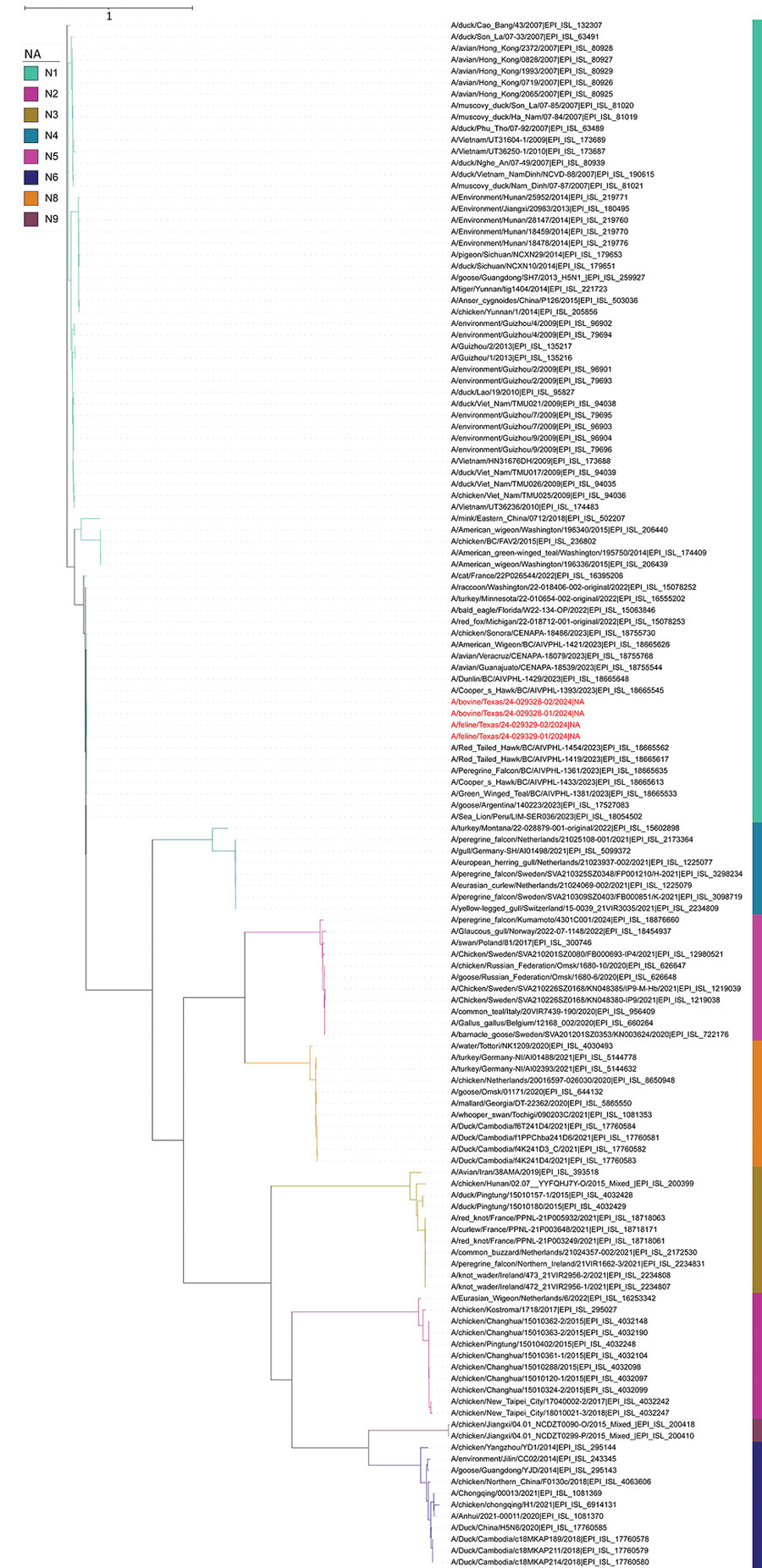Volume 30, Number 7—July 2024
Research
Highly Pathogenic Avian Influenza A(H5N1) Clade 2.3.4.4b Virus Infection in Domestic Dairy Cattle and Cats, United States, 2024
Figure 4

Figure 4. Phylogenetic analysis of neuraminidase gene sequences in study of highly pathogenic avian influenza A(H5N1) clade 2.3.4.4b virus infection in domestic dairy cattle and cats, United States, 2024. Colors indicate different subtypes. Red text indicates the virus gene sequences from bovine milk and cats described in this report, confirming those viruses belong to the N1 subtype. The neuraminidase sequences from this report had 99.52%–99.59% nucleotide identities to sequences from viruses isolated from a chicken and wild birds in 2023.
Page created: April 29, 2024
Page updated: June 22, 2024
Page reviewed: June 22, 2024
The conclusions, findings, and opinions expressed by authors contributing to this journal do not necessarily reflect the official position of the U.S. Department of Health and Human Services, the Public Health Service, the Centers for Disease Control and Prevention, or the authors' affiliated institutions. Use of trade names is for identification only and does not imply endorsement by any of the groups named above.